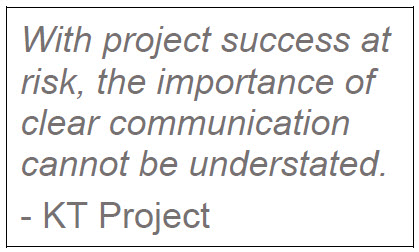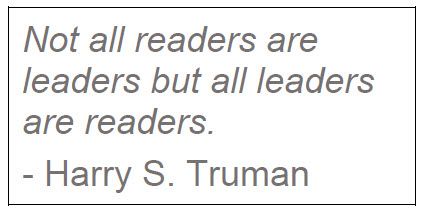Reading a Glossary for Advancement and Enjoyment
Introduction
Reading a glossary for career advancement and enjoyment is becoming increasingly common. Read a glossary to:
- Confirm understanding of known terminology;
- For enjoyment and to lighten mood;
- Improve education;
- Increase vocabulary; and,
- Master effective communication.
OK, but wait! Read for a glossary pleasure and to lighten mood? Who does this? After all, technical content is dry by nature.
Related: What Reading is Essential for Your Career? A Glossary!
Technical Content is Dry by Nature
Technical content is dry by nature. It is matter-of-fact, lacks embellishment, and deliberately presents facts without humour. Consider this definition of alloy:
An alloy is a metal made by combining two or more metallic elements to improve its properties (e.g., toughness, strength, or corrosion resistance). For example, steel is an alloy comprised of iron, carbon, and many other elements. Stainless steel is a steel alloy that comprises a minimum of 10.5% chromium.
As shown above, sometimes dry definitions are unavoidable. After all, a glossary needs precise definitions. But does it need to be boring? Not always! A well-written glossary includes interesting, relevant, and even humorous content that engages readers.
Two Kinds of Engaging Content: 1. Interesting and Relevant; 2. Humorous
Most readers prefer interesting, relevant, and humorous content because it engages and is easier to retain than dry content.
1. Interesting and Relevant Examples
This interesting definition of appreciative inquiry explains the theory of how a better future can be obtained by a focus on strengths instead of weaknesses:
Appreciative inquiry is an approach to organizational management that emphasizes working from strengths to find new directions for growth, rather than focusing on problems to be solved or weaknesses to be improved. It seeks to engage stakeholders in self-determined change. It advocates collective inquiry into the best of what is, to imagine what could be, followed by collective design of a desired future state that is compelling and thus does not require the use of incentives, coercion, or persuasion for planned change to occur. It uses ways of asking questions and envisioning the future to foster positive relationships and build on the present potential of a given organization, person, or situation.
The definition of people are messy explains why an individual may be difficult to manage:
People are messy describes how individuals can be cynical, difficult, egotistical, emotional, fallible, irrational, needy, petty, racist, unforgiving, unpredictable, and have other undesirable characteristics.
The definition of superforecasting describes effective and proven methods to predict the future, which is not by using arcane methods or powerful computers:
Superforecasting is the art and science of prediction, which is a skill that can be cultivated. It is the product of a way of thinking that is careful, curious, open-minded, and self-critical. Superforecasters can measurably predict events in advance. This concept was developed in the book Superforecasting: The Art and Science of Prediction by Philip E. Tetlock and Dan Gardner. They reported on data from The Good Judgment Project, which demonstrated that a group of selected amateur forecasters were often more accurate than individual analysts, insiders, and experts. For example, the result of the 2014 vote on the referendum for Scotland to separate from the United Kingdom – which was successfully predicted by the Good Judgment Project.
2. Humorous Examples
In the article Humor Me: When to Use (and Avoid) Humor in Your Writing, Morris Vaughan describes three reasons why humour benefits readers. For many readers, humour:
- Engages and holds interest;
- Makes content memorable and easier to retain; and,
- Is persuasive, and compels or convinces.[1]
Like interesting and relevant content, humorous content help readers retain and understand information. Examples can be fictitious or real.
The definition of lateral thinking uses fiction as a humorous example:
Lateral thinking describes the development and exploration of alternatives and ideas to respond to a challenge by using a variety of approaches that are often unconventional. For example, knowing that many equally or more qualified applicants will apply for the same position, a lateral thinker may decide to bring their resume with a pizza to a lunch-time interview at a construction site as a method to increase the chances they will be remembered by the interviewer and acquire the job.
The definition of safety factor uses historical facts as a humorous example:
A safety factor expresses how much stronger equipment, materials, or structures are than they need to be for their intended use. (e.g., a member, part, structure, or system). For example, the Brooklyn Bridge in New York, which was constructed in 1883, now bears the load of about 145,000 vehicles per day. During construction, it was common for bridges to collapse from inadequate aerodynamic stability, load capacity, or material failure. Out of caution, it was designed to have a factor of safety of 6. The cables are estimated to have a safety factor of 4 due to faulty wire. Thus, the bridge can sustain today’s (unplanned) loading and it continues to be durable almost 140 years later!
The definition of the word salad uses a humorous real-world example:
A word salad is a confused or unintelligible mixture of seemingly random phrases and words. The words may or may not be grammatically correct but are semantically confused to the point that the listener cannot extract meaning or that the meaning is ambiguous. An example of a word salad is: … going forward, we must bring a sense of urgency to the table and, quite frankly, unpack the issues as we step up to the plate and meet the challenges head-on.
Industry Jargon and Slang
A glossary may include more than terse technical terminology from an industry or narrow field of expertise. Many fields are known for using jargon and slang: these should be explained so they can be understood and avoided. For example, golden weld is a slang term for tie-in weld, which is a connection weld that cannot be hydrostatically tested because of the risk of contaminating the product, subsystem, or both with test fluid.
Personnel often use analogies and metaphors to explain complex technical data to others. For example, moving the goalpost means that the criterion or standard (i.e., the goal) of an argument, competition, or process has been changed while underway. For example, changing the monthly sales target to a higher amount mid-month.
Terminology may be common; however, this does not mean it is commonly understood by everyone. Fortunately, a well-written glossary defines this terminology. Regardless of your thoughts on jargon and slang, they make communication more interesting.
New Terminology
A glossary can also introduce new terminology that is relevant, but unknown, in a field. The concept of cross training to benefit a career is well-understood, though this learning may be restricted to similar fields. For example, an engineer may learn about new terminology from other engineering disciplines. Surprisingly, learning terminology from different fields may be just as advantageous as learning terminology from a similar or the same field. Would an engineer benefit by learning about the concepts and terminology used in other fields such as business, education, psychology, and renewable energy? Absolutely!
For example, what is the difference between the phrases reflective question and reflective questioning? Are there meanings similar, synonymous, or different? What do these similar phrases mean: calibrated question™ and precision questioning? The scientific method uses questions to determine if the observations agree or disagree with predictions derived from a hypothesis. Science, however, is not the only field that asks questions!
Communication is the Bane of Every Project
Miscommunication and misunderstanding contribute to costly project challenges. This is because industry lacks a common language; companies use their own terminology – which can be very confusing.[2] Ineffective communication puts 7.5% of project budgets at risk – that’s CAD$ 75 M for every CAD$1 B![3] Significant.

Challenges with common terminology used by different parties often involve:
- Abbreviations and acronyms;
- Brand names, proprietary names, and trademarks;
- Company-, discipline-, industry-, and project-specific terminology;
- Expressions, historical use of terms, etymology, and social influencers of jargon and slang;
- Phrases and terms used by third parties; and,
- Preferred and non-preferred terminology.
Reading a Glossary
Reading a glossary is an excellent career advancement strategy. Self-directed reading is key to earning and maintaining professional credentials. Daily reading has many benefits including increased knowledge, increased vocabulary, and reduced stress.
The cumulative knowledge personnel gain from regularly reading a glossary is noticeable; these personnel are generally more current and knowledgeable about terminology than their colleagues. Personnel who use this knowledge on the job are more likely to retain and share it, foster knowledge transfer, be more articulate, and be promoted.
The KT Project Glossary
The definitions and examples used in this article are from the KT Project Glossary of Common Industry and Project Terminology (the glossary). It is a quality compendium of business, career, engineering, industry, procurement, project, and scientific terminology comprising about 250,000 words (>700 pages). Figure 2 is the glossary title page.
The glossary provides precise definitions for thousands of common, current phrases and terms that reduce the risk of miscommunication and misunderstanding in project settings. It contains current, relevant terminology and over 3,000 real-world examples – many of which are interesting and humorous! It also lists over 100 references, and includes content that makes learning interesting and enjoyable.

Written and completed in the energy capital of Canada (Calgary, Alberta), the glossary is the first quality terminology resource written specifically for capital projects in the energy, industrial, mining, petrochemical, pipeline, power, and related sectors.
Use this comprehensive resource as an enjoyable means to learn existing and new discipline- and job-specific terminology. And to advance your career, and the careers of colleagues and friends!
Summary
A modern, up-to-date, and well-written glossary provides precise definitions that support career advancement and facilitate enjoyable learning, and:
- Assist:
- Inexperienced and young professionals;
- Those who speak or read English as a second language (ESL); and,
- With knowledge transfer when personnel move to a new company, industry, project, or role.
- Enhance the ability to communicate with others clearly and effectively (written and verbal);
- Expand horizons and encourage different ways of thinking; and,
- Improve:
- Knowledge broadly; and,
- The ability to speak intelligently about a range of subjects (i.e., especially to colleagues, professionals, and management).

Note
This article was published by EnergyNow on 4-Jun-21. https://energynow.ca/2021/06/energy-innovation-feature-reading-a-glossary-for-advancement-and-enjoyment/
Figures
- Reading for Advancement and Enjoyment. https://images.prismic.io/rise2/6942333d-be86-431b-b259-62271cdaad40_kak+pstp.jpg
- Glossary of Common Industry and Project Terminology. www.ktproject.ca
References
- Morris Vaughan. Humor Me: When to Use (and Avoid) Humor in Your Writing. http://wordsbyapro.com/humor-me-when-to-use-and-avoid-humor-in-your-writing/
- Construction Industry Institute. Achieving Zero Rework Through Effective Supplier Quality Practices. https://www.construction-institute.org/resources/knowledgebase/best-practices/quality-management/topics/rt-308/pubs/rs308-1
- Project Management Institute. The High Cost of Low Performance: The Essential Role of Communications. https://www.pmi.org/-/media/pmi/documents/public/pdf/learning/thought-leadership/pulse/the-essential-role-of-communications.pdf
Read More
To learn more about effective communication, read this KT Project eBook: Successful Projects Need Effective Communication – Tackling a complex challenge with a simple solution
About the Author
Roy O. Christensen founded the KT Project to save organizations significant money and time by providing key resources to leverage expert knowledge transfer for successful project execution.
Contact
Roy O. Christensen
Email: [email protected]
Telephone: +1 403 703-2686

